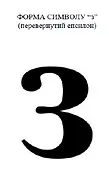Aerosol apocalypse - myth or reality?
- ETS Certification
- Jan 31
- 4 min read
The aerosol market in Ukraine is undergoing significant changes. Increased control by state authorities, particularly the State Emergency Service and customs, combined with market players' ambiguous interpretation of the current legislation and certain technical obstacles in implementing decisions by European manufacturers create significant risks for aerosol importers. Let's consider the main aspects of this situation.
The main document regulating the circulation of aerosol sprayers in Ukraine is the Technical Regulation, approved by the Resolution of the Cabinet of Ministers of Ukraine No. 154 dated February 21, 2023. The key requirements relate to the labeling: clear and indelible information about the product's safety, as well as the application of the conformity mark—"inverted epsilon" according to Annex 2 to the TR. However, the practice of applying this regulation revealed significant discrepancies between its literal interpretation and the requirements of regulatory authorities.

There is a variety of aerosol products on the market. Aerosols are used in various fields, which determines a wide range of their applications. The most common among them are products in the following areas:
Cosmetics: Hairsprays, deodorants, tanning sprays.
Household chemicals: Cleaning products, air fresheners,.
Auto chemicals: universal lubricants, cleaners, paints for cars.
Disinfectants: Antiseptics, insecticides, disinfectants for surfaces.
Paints and varnishes: Sprays for painting, varnishing furniture and other surfaces.
Construction chemicals: Adhesives, sealants, foams.
Each of these categories of aerosols is subject to hazard classification requirements determined by the Technical Regulation on Hazard Classification, Labeling and Packaging of Chemical Products (Resolution of the Cabinet of Ministers of Ukraine No. 539 of May 10, 2024) and relevant international standards (e.g. GHS). Safety Data Sheets (SDS) contain detailed information about the properties of the substances that make up the aerosol, hazard classification, safety measures, etc. The information of the safety data sheet regarding pictograms, signal words, warning inscriptions is the basis for correct marking. It is also worth noting that specialized regulations may also be applied to each type of product, such as detergents, cosmetics or disinfectants, which additionally determine their labeling requirements.
In practice, we see that there are problems with the interpretation of the requirement for "indelible" marking. Market surveillance reveals deficiencies, in particular, in the use of adhesive stickers, which are considered to be damaged or washed off. This leads to conflict situations and the threat of a ban on the import of products. Since the Technical Regulation for Aerosol Sprayers was developed on the basis of Council Directive 75/324/EEC of May 20, 1975, which did not provide for the shape of the image image for the "inverted epsilon", or rather "inverted or reverse", and in practice, European manufacturers began to use different forms of writing the conformity mark (Fig. 1.).
Fig. 1.

The official response of the Ministry of Internal Affairs of Ukraine to the request of Eurotechstandard LLC confirmed the obligation of the "inverted epsilon" sign with clear requirements for size and shape (minimum height 3 mm, compliance with Annex 2 of the Regulation). The character used is defined by the UNICODE character standard under the code "1D6C6". The requirement of the regulation that all data applied to the aerosol sprayer must be visible, legible and indelible, and that clause 8 of the TR determines that markings and inscriptions that do not correspond to the meaning and shape of the symbol in accordance with Annex 2 is prohibited on the aerosol sprayer.
A number of companies have managed to adapt to the new requirements of the regulations, but there are still those that did not have time to do so. Currently, European and other foreign manufacturers are faced with the question of replacing the marking of the TR mark of aerosols in the form of "inverted epsilon" with a form that must comply with Annex 2 of the TR of aerosols in Ukraine, if such a symbol has a different spelling from the one produced earlier. Will foreign manufacturers meet Ukrainian importers with such a change, since the existing labeling has been satisfying all other markets for decades? This issue is a key dilemma for Ukrainian importers and foreign manufacturers, since, as practice shows, labeling in the form of stickers is unacceptable for market surveillance in Ukraine.
The current practice of customs control and market surveillance in Ukraine regarding aerosol products creates significant difficulties for importers. The combination of strict control with ambiguous interpretation of current legislation, high labeling requirements and the possibility of subjective interpretation of regulations can lead to a delay or ban on the import of aerosol batches. This, in turn, can cause a shortage of aerosol products on the market, as well as a significant increase in their cost for the consumer.
It seems that the need to defend their rights is a reason for manufacturers and importers to unite in professional guilds to defend the inflated requirements of state bodies, unambiguously interpret regulatory requirements and eliminate the risks of corruption that arise during inspections.
Importers should carefully prepare for inspections of products in circulation and when crossing control, take into account all the nuances of the legislation and be ready for possible litigation to protect their interests. Without fundamental changes in control approaches and a clearer interpretation of the requirements of the regulation, the risk of collapse of the market for imported aerosols remains quite high. Sometimes excessive requirements of market surveillance in Ukraine can create unnecessary obstacles to the free circulation of products.
I just want to end with the phrases of the regulations: "Extremely flammable aerosol. Do not spray near an open flame or other ignition source. Pressurized container. It can explode when heated."









Comments